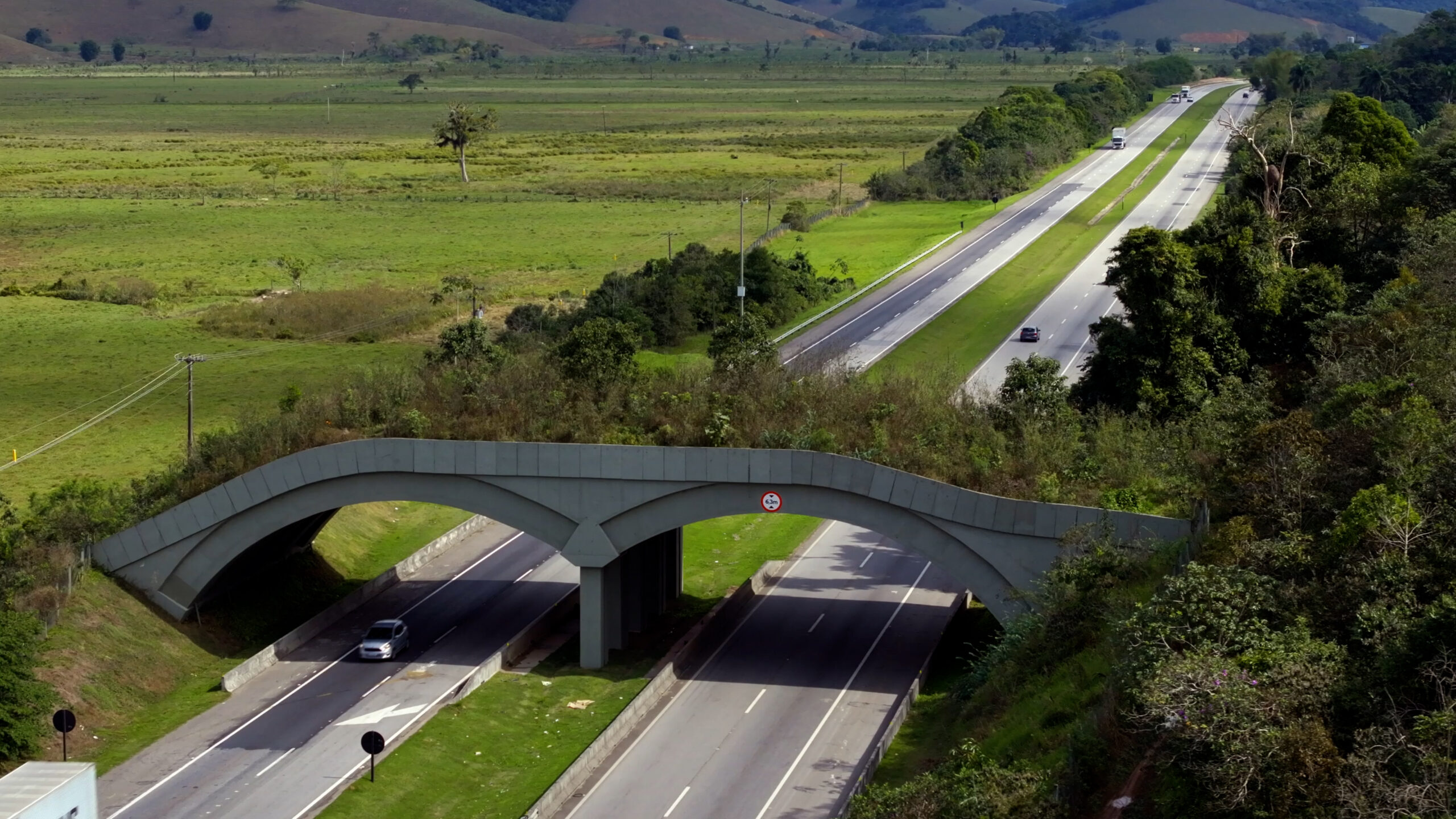Just like humans, wild animals often need to cross busy roads as they roam. But unlike us, they can’t rely on stoplights and crosswalks. That’s where wildlife crossings come in.
A wildlife crossing is a specially-made structure that helps animals bypass traffic and cross roads safely. Not only does this reduce animal death and injury, but it also improves habitat connectivity.
Hundreds of millions of creatures—from mountain lions to salamanders—die each year in wildlife-vehicle collisions. But studies show that installing wildlife crossings where animals commonly travel can dramatically reduce collisions, especially when the structures are paired with fences around roads. This “funneling system” enables animals to move more freely about the landscape in search of food, water, and mates.
There are many different kinds of crossings. Underpasses funnel animals under roadways, overpasses help them move above roadways, and rope bridges help tree-dwelling animals remain safely at canopy level when crossing over a busy roadway. Conservationists consider a lot of factors when deciding which kind of crossing they want to install in a given place, including the local terrain, the local ecosystem, and which species need to safely get from Point A to Point B.
In the Wild Hope episode Road Warriors, we introduce you to a woman in Brazil dedicating her life to installing wildlife crossings across the country’s expanding road network.
